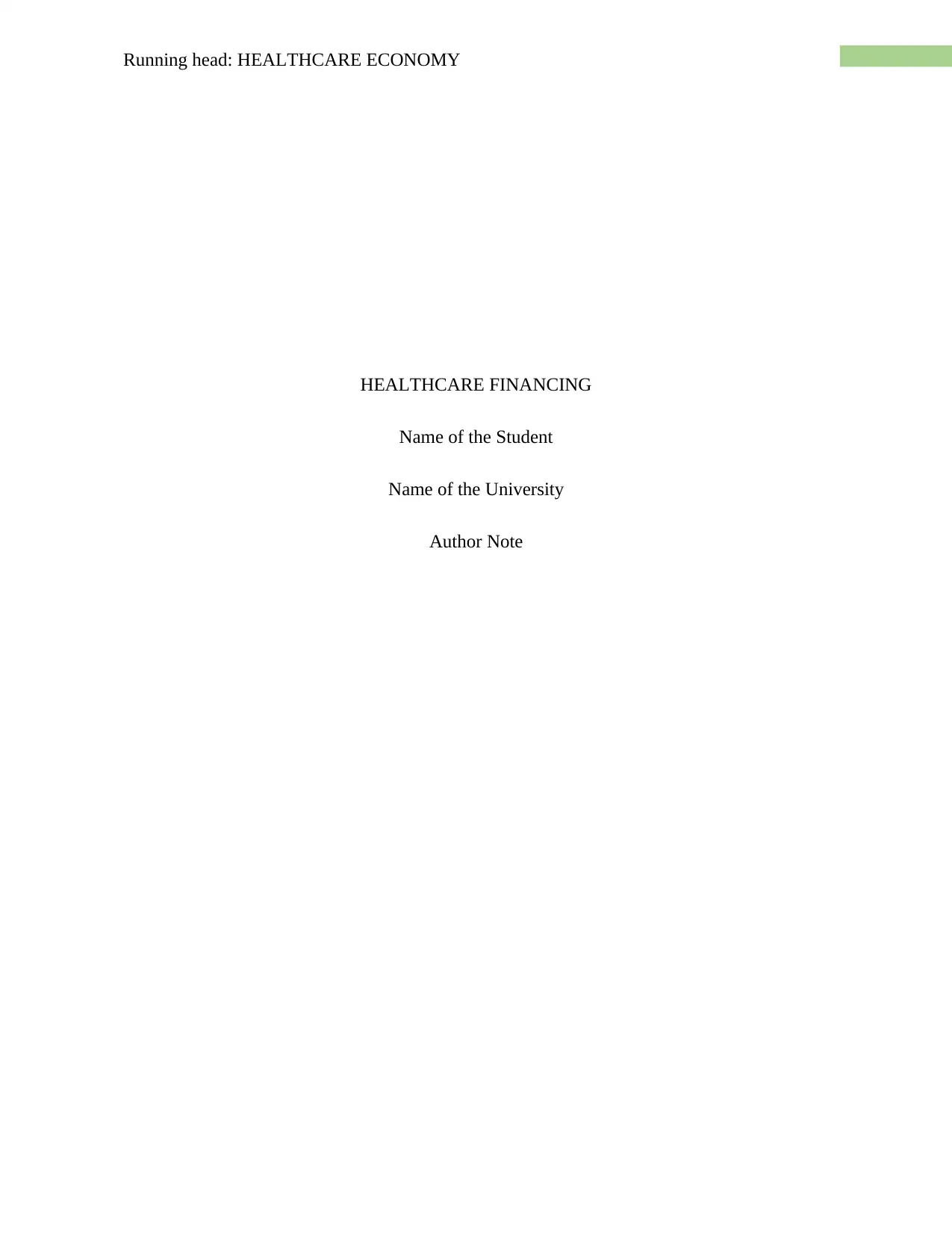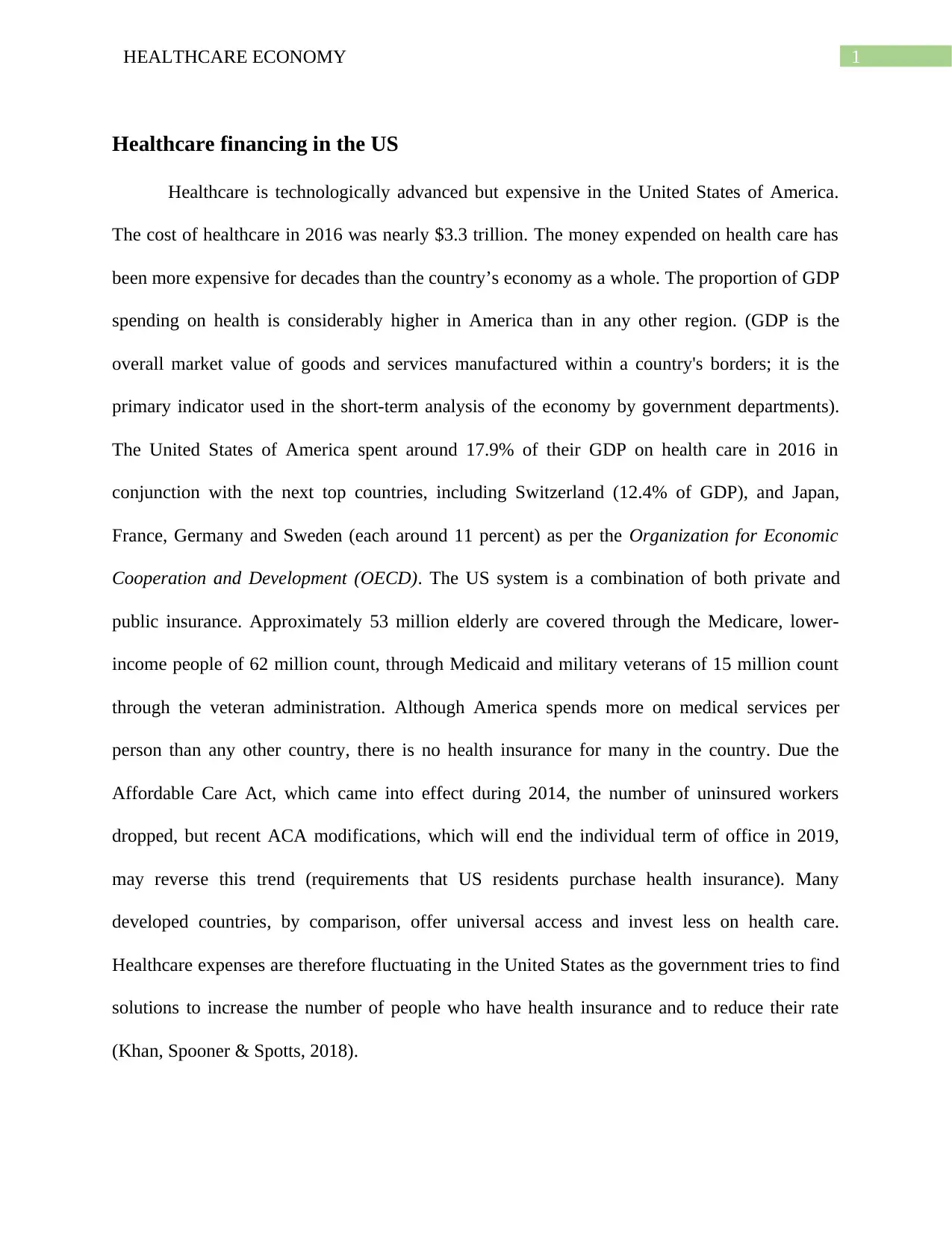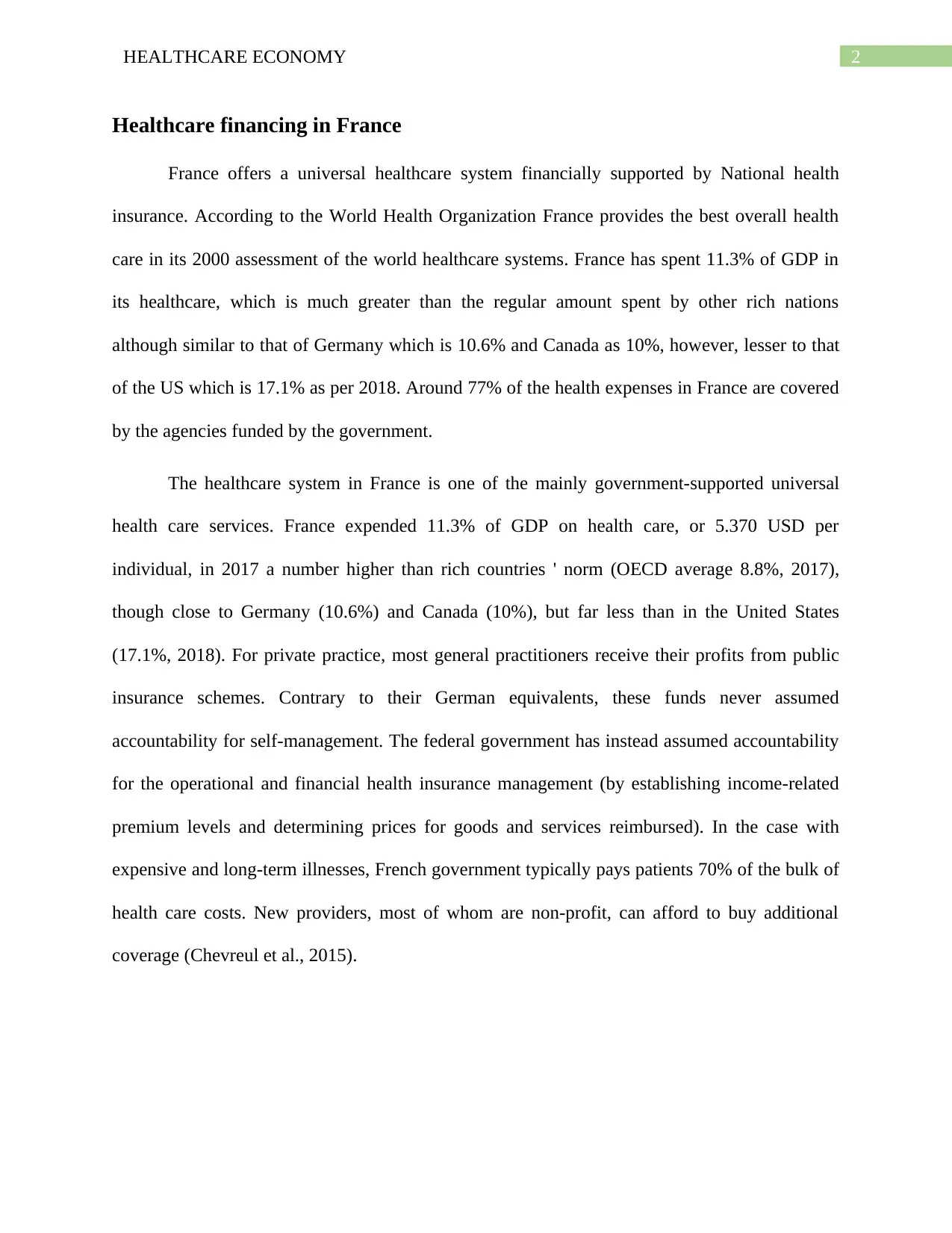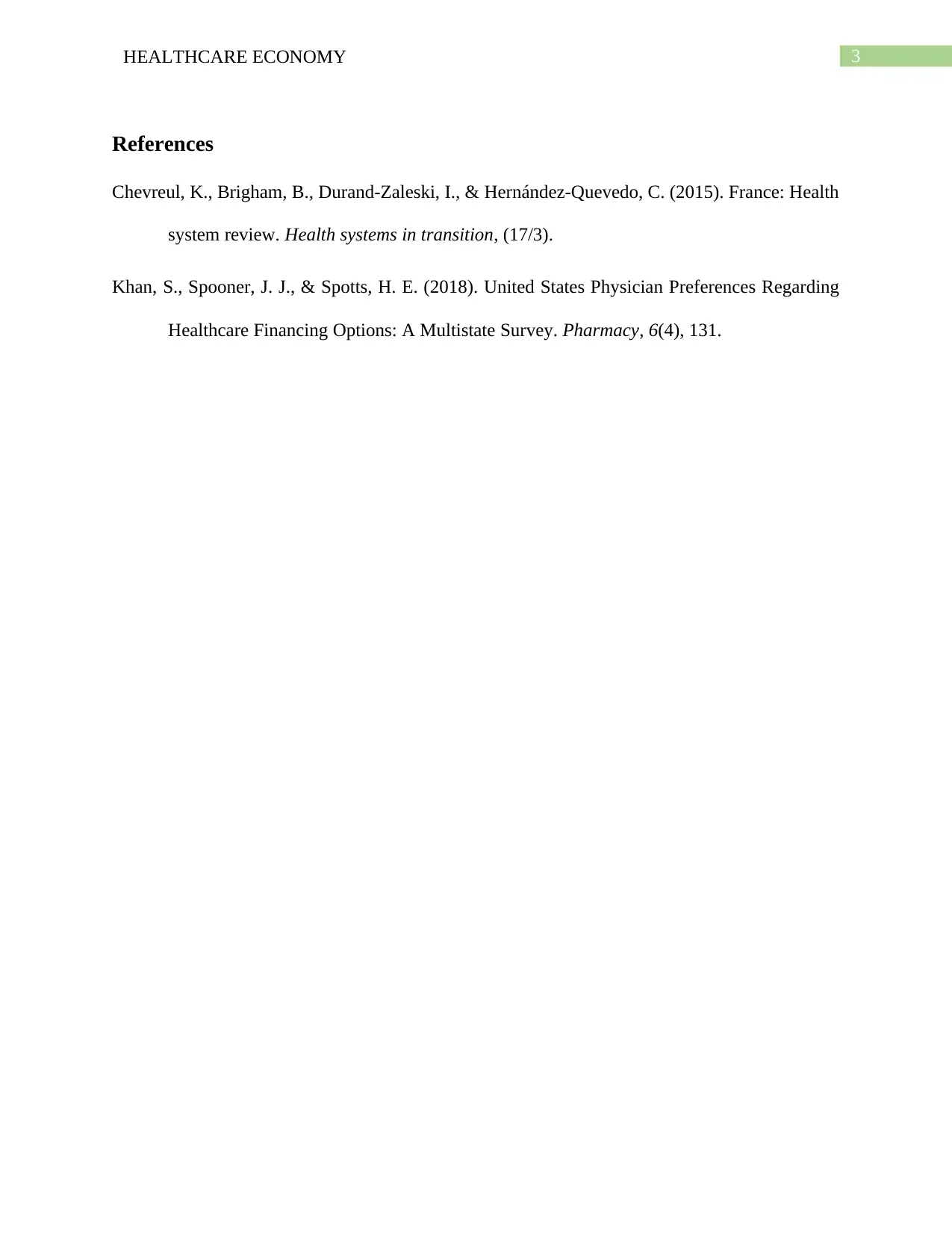A Comparative Study of Healthcare Financing Models: US vs. France
VerifiedAdded on 2022/08/12
|4
|751
|40
Report
AI Summary
This report provides a comparative analysis of healthcare financing in the United States and France. It begins by examining the high costs of healthcare in the US, including the significant percentage of GDP spent on healthcare compared to other developed nations. The report outlines the US system's combination of private and public insurance, including Medicare, Medicaid, and veteran's administration. It then discusses the impact of the Affordable Care Act. In contrast, the report details France's universal healthcare system, funded by national health insurance, and its expenditure on healthcare relative to GDP. The French system is highlighted as a government-supported model, detailing how healthcare expenses are covered. The report references key studies and data sources to support its comparisons, offering a comprehensive overview of the two healthcare financing models.
1 out of 4











![[object Object]](/_next/static/media/star-bottom.7253800d.svg)